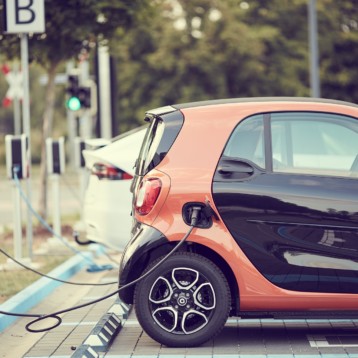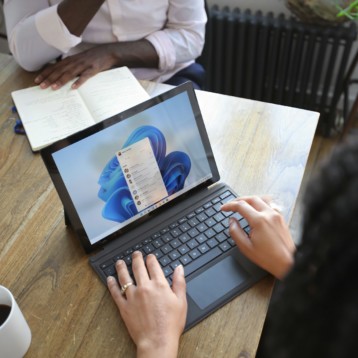
Soon, the way we shop for groceries won’t look anything like it does today. Instead of having to go from aisle to aisle searching for items and standing in long lines to pay, shoppers will be able to find whatever they need more quickly and conveniently, thanks to the help of digital technologies.
While you may dispute this and suggest that we will all eventually transition to online shopping and grocery stores will become extinct, the data argue otherwise, with 82% of shoppers still primarily buying their groceries in-store. However, the fact of the matter is that the in-store experience hasn’t kept up with customers’ expectations, especially when compared to the ecommerce sector.
In light of this gap, forward-thinking leaders of grocery stores are working hard to embrace the vision of a digital future by transforming the in-store shopping experience with innovative technology. Thanks to advancements in virtual reality, smart carts, interactive displays and connected shelves, grocers are starting to catch up, bringing the in-person supermarket shopping experience up to speed with the convenient and user-friendly online shopping experience.
With this in mind, let’s take a look at the future of in-store grocery shopping and how digital experiences will make it faster, easier, and more enjoyable.
Virtual/augmented reality
Unless you have been hiding under a rock, you have likely heard of virtual reality (VR) and augmented reality (AR) technologies. This groundbreaking technology can be used in many different ways, and one of the most promising applications is its use in grocery shopping. With VR/AR, shoppers will be able to have a truly immersive experience while they shop.
For example, they could “try on” clothes or virtually experience a demo of the products they are considering buying.
Grocery stores can also use VR/AR to create virtual aisles, allowing shoppers to quickly find what they are looking for. This will not only make their shopping experience more enjoyable but also enable them to save time.
One of the more interesting examples of this in use is the Albertsons Virtual Reality Experience Centers. The grocer has been spearheading the move to bring grocery shopping experiences to the metaverse by giving customers the chance to virtually shop for groceries and pick up their orders in-store.
Automated self-checkout technology
An exciting advancement in grocery shopping has recently arrived; the clip-on smart cart device. These devices can be easily attached to your cart as you enter the store, allowing you to quickly scan items and find product information as you browse through the aisles. Whereas smart carts have existed for several years, their adoption has been slow, arguably due to the major investment required. However, the advent of clip-on smart cart devices has effectively changed the equation.
Shopic’s device is on the cutting edge of this trend, utilizing advanced computer vision AI to detect items as they are thrown into the cart – even multiple items at once, and even while in motion. Through the interface, consumers can view the running total of their purchases, receive product recommendations, and even view personalized offers tailored to their shopping patterns. Once the customer is done with their shop, all they have to do is approve the checkout tally and walk out.
Not only does this provide benefits to the shopper, but it also helps the store reduce costs and be more efficient, as well as increase average cart value due to the product recommendations. Shopic’s solution recently saw the largest-scale deployment of any smart cart, with Israel’s largest supermarket chain, Shufersal, rolling out 2000 units.
Amazon has also been rolling out its “Just Walk Out” technology to its physical stores (and third-party retailers), which eliminates the need for shoppers to wait in line. Using cameras and sensors strategically placed throughout the store, customers can shop as they normally would, grab what they need, and then simply walk out – with their purchases automatically being charged to their Amazon account.
Clearly, these innovative technologies are moving us closer and closer to a frictionless and more enjoyable grocery shopping experience.
Interactive product displays
Have you ever gone to the store and been unsure of what a certain product looks like inside the package or how it works? Or maybe you have been searching for the nutritional information of a food item but couldn’t find it. This is where interactive product displays can come in handy.
Using touchscreens and sensors, shoppers will be able to instantly access additional information about the products they are interested in. Product recommendations, nutrition facts, reviews, and even shoppable product links can appear on these displays with a simple touch.
Some stores, such as Alibaba’s Hema supermarkets in China, even allow customers to scan QR codes of products that provide the customer with information about the product, including how fresh it is, by looking at when it was delivered to the store.
These displays even demonstrate recipes that the customer can make using the product as well as delivery options if the customer wants the item sent to their home.
Smart shelves and labels
Smart shelves are quickly becoming a popular retail solution for many businesses. These digital shelves, also known as Electronic Shelf Labels (ESLs), provide automated and up-to-date information about product prices, availability, and more in real time.
For consumers, this means that shopping becomes easier with accurate and up-to-date information always being available.
With ESLs, shoppers can easily compare prices and make sure that the items they are buying are not out of stock or overpriced. This allows people to find the best deals quickly and efficiently.
ESLs such as SOLUM Newton labels can provide much more than just visually displaying product information. These ESLs come with two pre-programmed buttons that customers can use to summon help. Plus, they are outfitted with NFC-tapping capability, which means that they can send purchase signals to self-checkout systems, elevating the customer experience even further.
Potential challenges
While the digital transformation of the grocery industry is exciting, there are potential challenges and concerns to be aware of as well. First of all, supply chains may have to be revamped in order for these digital solutions to work, as most grocery stores still rely on manual processes and outdated technologies. Agile demand planning cycles may need to be implemented in order to ensure that the right products are stocked at the right time.
Of course, there will also be concerns about privacy and data collection. How data is stored, used, and protected must be carefully examined before implementing any digital solutions, and this is something that many retailers may struggle with.
Finally, the rise of automated digital solutions may potentially lead to job losses in the industry, which is something that must be taken into consideration as well.
Final thoughts
In conclusion, the grocery industry is making strides in adapting to digital technologies and reshaping the customer experience. With interactive displays, QR codes, and smart hardware all providing convenience and ease of use to shoppers, retailers must be mindful of potential issues that may arise with transitioning to digital systems.
With careful consideration, however, grocery stores can continue creating a positive shopping experience for their customers through digitization, ushering in a new era of convenience and efficiency.










